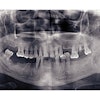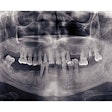Abdominal obesity may be linked to poorer oral health habits, including sporadic tooth brushing, inadequate flossing, and higher rates of tooth decay, according to a study recently published in BMC Oral Health.
Including body mass index (BMI) and waist circumference (WC) in risk assessments may help improve oral and overall health outcomes, the study’s authors wrote.
“Our findings revealed that overweight individuals demonstrated better oral health behaviors, while general and abdominal obesity were associated with poorer behaviors to varying degrees,” wrote the authors, led by Elahe Tahmasebi of the Baqiyatallah University of Medical Sciences School of Dentistry in Iran (BMC Oral Health, October 29, 2025, Vol. 25:1, 3655).
The study explored the relationship between oral health behaviors and obesity, measured by BMI and WC. The researchers analyzed data from the oral health branch of the Rafsanjan Cohort Study, which was conducted in Iran from August 2015 to December 2017, they wrote.
The study included 6,745 participants ages 35 to 70. Data was gathered through oral examinations, interviews, and questionnaires covering demographics, lifestyle factors like smoking, and oral health habits. Clinical oral examinations were performed to assess the decayed, missing, and filled teeth (DMFT) index of the participants.
Among the participants, 42.5% were overweight, while 31.5% and 55.7% had general and abdominal obesity, respectively. General obesity was linked to poorer brushing and flossing habits (odds ratio [OR]: 0.77; 95% confidence interval [CI], 0.61 to 0.97). Abdominal obesity was also associated with reduced brushing and flossing (OR: 0.68; 95% CI, 0.55 to 0.85) and 19% lower odds of daily tooth brushing (OR: 0.81; 95% CI, 0.68 to 0.96), they wrote.
Overweight participants had better brushing and flossing habits (OR: 1.35; 95% CI, 1.09 to 1.66) and brushed daily 22% more often (OR: 1.22; 95% CI, 1.03 to 1.45). Overweight and generally obese participants had more recent dental visits and lower DMFT rates, whereas abdominal obesity was linked to higher DMFT scores, the authors wrote.
The study, however, had limitations. Its cross-sectional design limited its ability to determine causality or clarify the direction of the associations, the authors added.
“Future research should focus on causal pathways to support integrated strategies for improving both oral and general health outcomes,” they concluded.




















